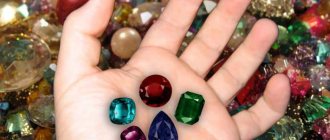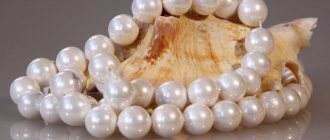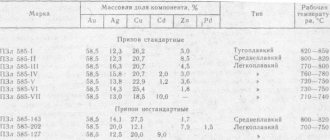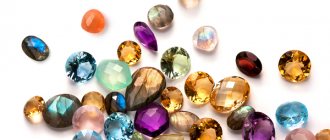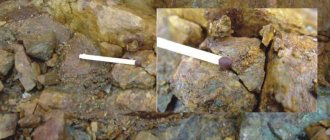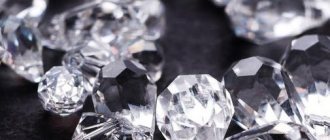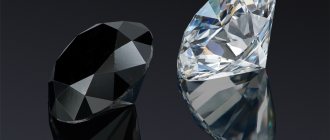Fluorescent minerals
Oct 19, 2017
What is a fluorescent mineral?
All minerals have the ability to reflect light. This is what makes them visible to the human eye. Some minerals have an interesting physical property known as "fluorescence." These substances have the ability to temporarily absorb small amounts of light and instantly release it at a different wavelength. This change in wavelength causes a temporary change in the color of the mineral.
The color changes of fluorescent minerals are most impressive when they are illuminated in the dark with ultraviolet light (invisible to humans).
More about fluorescence
Fluorescence in minerals occurs when a sample is illuminated with a specific wavelength of light. Ultraviolet (UV) light, X-rays, and cathode rays are typical types of light that cause fluorescence. These types of light have the ability to excite sensitive electrons in the atomic structure of a mineral. The excited electrons temporarily jump to a higher orbit within the mineral's atomic structure. When these electrons return to their original orbit, a small amount of energy is released in the form of light. This process of releasing light is known as fluorescence. The wavelength of light released from a fluorescent mineral is often noticeably different from the wavelength of incident light. This leads to a noticeable change in the color of the mineral. The glow continues as long as the mineral is illuminated by light of the appropriate wavelength.
How many minerals glow under UV light?
Most minerals do not have noticeable fluorescence. Only about 15% of minerals have a glow that people can see, and other examples of these minerals will not glow. Fluorescence usually occurs when certain impurities known as "activators" are present in the mineral. These activators are usually metal cations such as tungsten, molybdenum, lead, boron, titanium, manganese, uranium and chromium. Rare earth elements such as europium, terbium, dysprosium and yttrium are known to contribute to the fluorescence phenomenon. The glow of minerals can also be caused by structural defects in the crystals or organic impurities.
Some impurities quench fluorescence. If iron or copper is present as impurities, they can reduce or eliminate fluorescence. In addition, if the mineral activator is present in large quantities, it may reduce the fluorescence effect.
Most minerals glow in one color. Other minerals have multiple fluorescent colors. Calcite is known to glow in red, blue, white, pink, green and orange. Some minerals exhibit multiple colors of fluorescence in a single sample. These may be banded minerals that exhibit several stages of growth from initial solutions with varying compositions. Many minerals fluoresce one color under short-wave UV light and a different color under long-wave UV light.
Fluorite: the original "fluorescent mineral"
One of the first people to observe fluorescence in minerals was George Gabriel Stokes in 1852. He noted fluorite's ability to produce a blue glow when illuminated with invisible light "beyond the violet end of the spectrum." He called this phenomenon "fluorescence." This definition is widely accepted in the fields of mineralogy, gemology, biology, optics, commercial lighting and many other fields.
Most fluorite samples have fairly strong fluorescence. An observer can take them outside, hold them in sunlight, then move them into the shade and see the color of the mineral change. Only a few minerals have this level of fluorescence. Fluorite typically glows blue-violet under short and long wavelength light. Some samples are known to accumulate cream or white color, but many do not fluoresce. It is assumed that the glow in fluorite is due to the presence of yttrium, europium, samarium or organic material as activators.
Fluorescent geodes?
You may be surprised to learn that geodes (geological formations) have been found with fluorescent minerals inside. Some of the geodes discovered near the community of Dugway, Utah, are filled with chalcedony, which produces a lime-green fluorescence caused by the presence of traces of uranium.
These geodes are amazing for another reason. They formed several million years ago in archaeolite gas pockets. Then, about 20,000 years ago, they were destroyed by wave action along the shoreline of a glacial lake and transported several miles to where they settled in lake sediments. Today, people excavate these geodes and add them to geodetic and fluorescent mineral collections.
Lamps for viewing fluorescent minerals
The lamps used to find and study fluorescent minerals are different from the newer ultraviolet lamps (called "black lamps"). These new items are not suitable for studying minerals for two reasons: 1) they emit long-wave ultraviolet light (most fluorescent minerals respond to short-wave ultraviolet light); 2) the lamps emit a significant amount of visible light, which interferes with accurate observation, and is not a problem for using the new product.
Scientific lamps are available in different wavelength ranges. Lamps used to study minerals have a filter that allows ultraviolet wavelengths to pass through, but blocks most visible light that would interfere with observation. These filters are expensive and are partly responsible for the high cost of scientific lamps.
For close examination of fluorescent minerals, a 4-watt UV lamp with a small filter window and a small collection of short and long wave fluorescent mineral samples are provided.
UV Lamp Safety
Ultraviolet wavelengths of light are present in sunlight. The length of these waves can cause sunburn. Ultraviolet lamps produce the same wavelengths of light as short-wave ultraviolet rays, which are blocked by the ozone layer of the Earth's atmosphere.
Small UV lamps with only a few watts of power are safe for short periods of use. The user should not look into the lamp or shine it directly on the skin, face of a person, or on a pet. Looking into the lamp may cause serious eye injury. Exposing your skin to UV light can cause sunburn.
Eye protection should be worn when using any UV lamp. Inexpensive UV blocking safety glasses provide reliable protection when using a low voltage UV lamp for short periods of research.
UV lamp protection items used for fluorescent mineral research should not be confused with those sold with "black lamps". These lamps emit low-intensity long-wave UV radiation, which can cause sunburn and eye damage. This is why mineral lamps should be used with more eye protection than black lamps.
Ultraviolet lamps, which are used to illuminate large surfaces of minerals or for outdoor field work, have a much higher voltage than small UV lamps. Eye protection and clothing that covers legs and arms should be worn when working with high-voltage lamps.
Practical use of fluorescence of minerals and rocks
Fluorescence has practical applications in mining, gemology, petrology and mineralogy. The mineral scheelite and tungsten ore typically have a bright blue glow. Geologists looking for scheelite and other fluorescent minerals use ultraviolet lamps to search at night. Scientists in the oil and gas industry sometimes examine drill cuttings and rods with UV lamps. Small amounts of oil in rock wells and mineral grains will glow under ultraviolet light. The fluorescence color may indicate the thermal maturity of the oil. Darker colors indicate heavy oils, while lighter colors indicate light oils.
Fluorescent lamps can be used in mines to identify and track ore-bearing rocks. They have also been used on collection lines to quickly locate valuable pieces of ore and separate them from waste.
Many gemstones are fluorescent, such as ruby, kunzite, diamond and opal. This property can sometimes be used to detect small stones in sediments or crushed ore and to search for minerals in the area. For example: light yellow diamonds with blue fluorescence are produced by the Premier mine in South Africa, and colorless stones with blue fluorescence are produced by the Jagerfonteen mine in South Africa. The stones mined from these mines are called "Premiers" and "Yagi".
In the early 1900s, many diamond traders were looking for stones with a bright blue fluorescence. They believed that these stones would appear more colorless (less yellow) when viewed under high ultraviolet light. This eventually led to the control of lighting conditions for diamonds when sorting by color. Fluorescence is not usually used in mineral identification. Most minerals do not fluoresce, and this property is unpredictable. A good example is calcite. Some calcites do not glow. And other samples fluoresce in a variety of colors, including red, blue, white, pink, green and orange. Fluorescence is rarely a diagnostic property.
Books on fluorescent minerals
Two excellent introductory books to fluorescent minerals: Collecting Fluorescent Minerals and The World of Fluorescent Minerals are written by Stuart Schneider. These books are easy to understand and each has a fantastic collection of color photographs. The illustrations show fluorescent minerals under normal light and under different wavelengths of ultraviolet light. The books are excellent for learning about fluorescent minerals and serve as valuable references.
Other luminescence properties
Fluorescence is one of several luminescent properties that a mineral can exhibit. Other luminescence properties include:
Phosphorescence
In fluorescence, electrons excited by incoming photons are raised to a higher energy level. Remains there for a split second before returning to its original state and releasing fluorescent light. In phosphorescence, electrons remain in an excited state for a longer period of time before falling. Fluorescent minerals stop glowing when the light source is turned off. Minerals with phosphorescence can glow for a short time after the light source is turned off. Minerals that sometimes phosphoresce include: calcite, celestite, colmanite, fluorite, sphalerite and willemite.
Thermoluminescence
Thermoluminescence is the ability of a mineral to emit a small amount of light when heated. This heating can range from 50 to 200 degrees Celsius - much lower than incandescent temperatures. Apatite, calcite, chlorophane, fluorite, lepidolite, scapolite and some feldspars are sometimes thermoluminescent.
Triboluminescence
Some minerals will emit light when exposed to mechanical energy. These minerals glow when struck, crushed, scratched or broken. The glow is the result of a breakdown of bonds in the structure of minerals. The amount of light released is very small and careful observation in the dark is often required. Minerals that sometimes exhibit triboluminescence include amblygonite, calcite, fluorite, lepidolite, pectolite, quartz, sphalerite, and some feldspars.
What minerals glow in ultraviolet light?
There are many minerals that glow in ultraviolet light. At the same time, different types of minerals, like precious stones, are characterized by their unique glow under the influence of UV rays. Depending on the purity of the composition, that is, the presence of various impurities, geographic location, formation conditions and some other factors, minerals can fluoresce differently:
- Diamond – blue, light green, yellow, orange or pale red;
- Aragonite – green, yellow, cream or bluish-pale hue;
- Apatite – orange, yellow, brown, purple and other colors;
- Calcite – red, green, white, purple, orange and violet;
- Rubies (sapphires) – purple, orange, red, violet, yellow, cream;
- Flurite - blue, white, red, cream, purple and yellow;
- Zircon – orange and bright yellow;
- Monazite – green;
- Polucite – pale yellow;
- Witherite – bluish-green;
- Marialit – bright pink;
- Otenite – yellow-green, as well as pure green or yellow;
- Spinel – blue, green.
This list of minerals that glow under ultraviolet radiation is far from complete. For example, amber, which is not listed, can fluoresce in many shades: from light green to yellow, as well as blue, and bustamite gives a purple-red hue.

